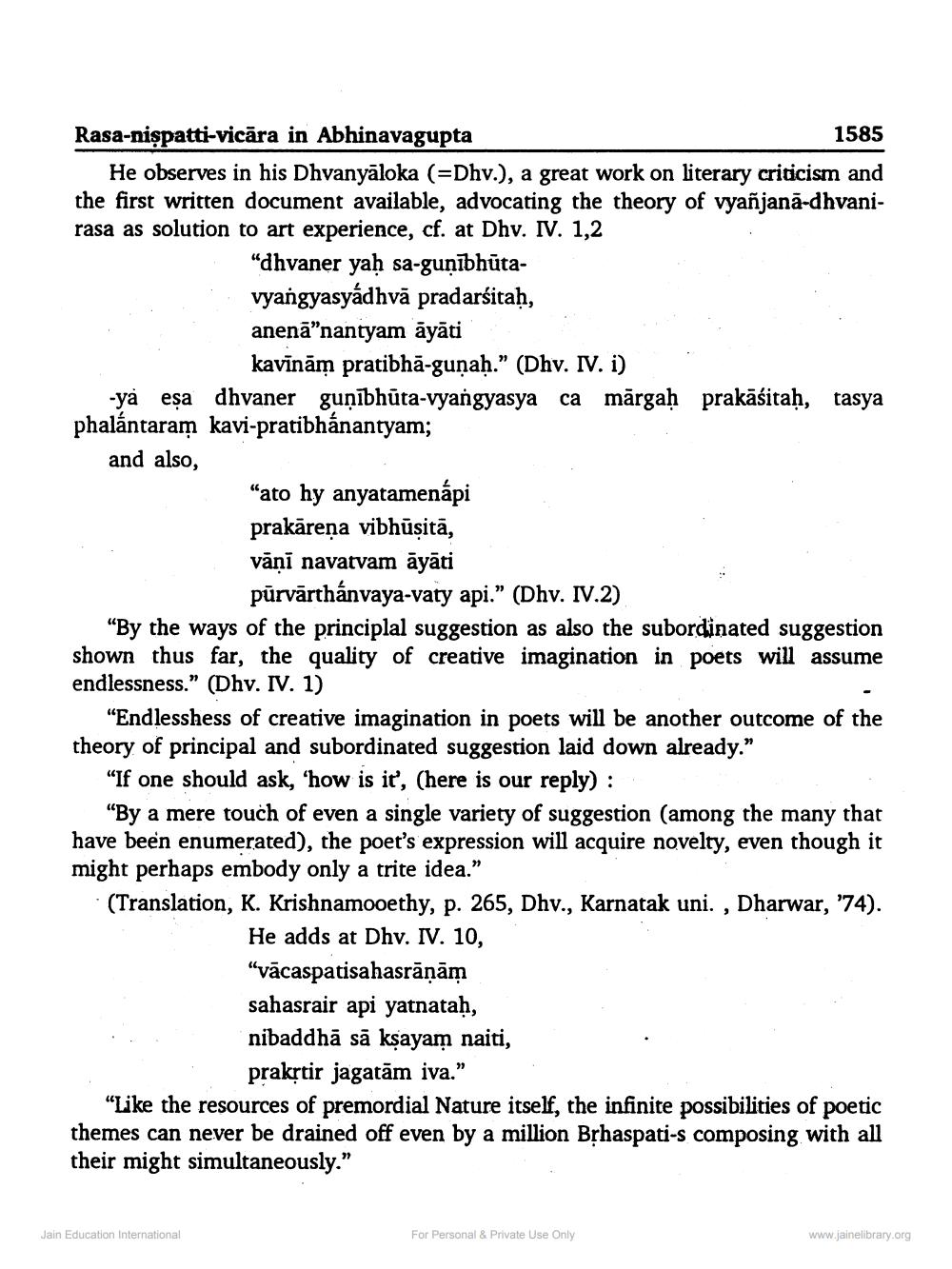________________
Rasa-niṣpatti-vicāra in Abhinavagupta
1585
He observes in his Dhvanyāloka (=Dhv.), a great work on literary criticism and the first written document available, advocating the theory of vyañjana-dhvanirasa as solution to art experience, cf. at Dhv. IV. 1,2
"dhvaner yaḥ sa-guṇībhūtavyangyasyadhva pradarśitaḥ, anenā❞nantyam āyāti
kavīnām pratibhā-guṇaḥ." (Dhv. IV. i)
-ya eşa dhvaner gunībhūta-vyangyasya ca margaḥ prakāśitaḥ, tasya phalántaram kavi-pratibhánantyam;
and also,
"ato hy anyatamenápi
prakāreņa vibhūṣitā,
vāṇī navatvam āyāti
purvārthánvaya-vaty api." (Dhv. IV.2)
"By the ways of the principlal suggestion as also the subordinated suggestion shown thus far, the quality of creative imagination in poets will assume endlessness." (Dhv. IV. 1)
"Endlesshess of creative imagination in poets will be another outcome of the theory of principal and subordinated suggestion laid down already."
"If one should ask, 'how is it', (here is our reply) :
"By a mere touch of even a single variety of suggestion (among the many that have been enumerated), the poet's expression will acquire novelty, even though it might perhaps embody only a trite idea."
Jain Education International
(Translation, K. Krishnamoorthy, p. 265, Dhv., Karnatak uni., Dharwar, '74).
He adds at Dhv. IV. 10, "vācaspatisahasrāṇām sahasrair api yatnataḥ, nibaddhā sā kṣayam naiti,
prakṛtir jagatām iva."
"Like the resources of premordial Nature itself, the infinite possibilities of poetic themes can never be drained off even by a million Bṛhaspati-s composing with all their might simultaneously."
For Personal & Private Use Only
www.jainelibrary.org




